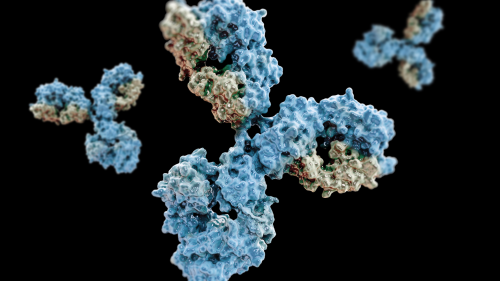
Good's syndrome
Related gene: Unknown
Inheritance pattern: Unknown
This primary immunodeficiency is characterized by low immunoglobulins together with a thymoma (tumor on the thymus). Good’s syndrome is usually first suspected when a thymic tumor is seen on a chest X-ray, although in about half the cases the history of recurrent infections precedes the detection of the thymoma. Most patients are adults. Removal of the thymoma does not cure the immunodeficiency, although it may help other symptoms. Eosinophils may be very low or undetectable in these patients.











